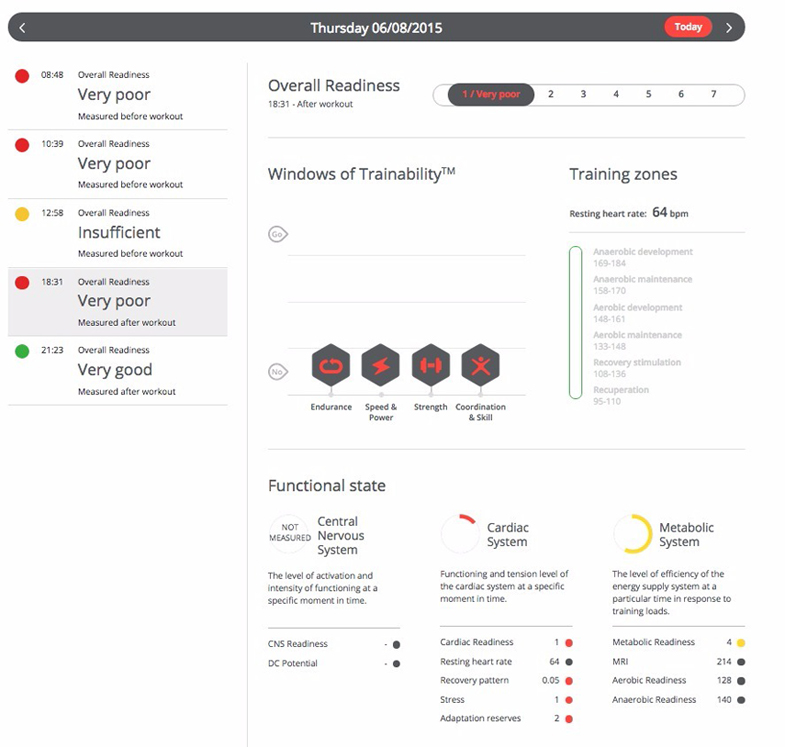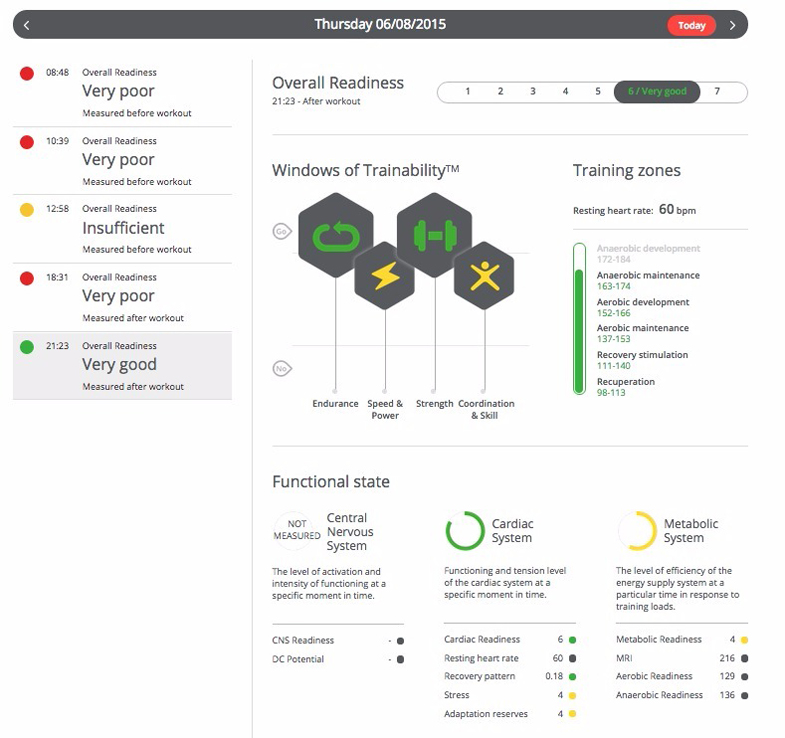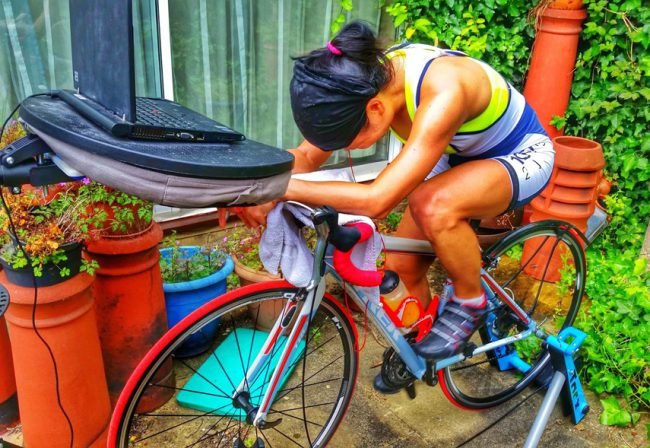This article is about the impact of massage on recovery, as measured by the Omegawave system. I and many of my clients use the Omegawave system to give feedback on the effects of everyday life and training stresses: this enables us to better adapt the training plan to take into account how the body is responding to the imposed stressors, both short and long term. Many things can make the various readings worse—a bad night’s sleep, a reduced calorie intake, a very hard training session or even the onset of illness.
Using the Omegawave means we don’t have to wait weeks or even months to see if our training is having a beneficial or a negative effect. This means we can make changes earlier and spend less time fighting against nature. Instead, we can work with the body and do hard training sessions when Readiness is high and easier training sessions when things are less ideal.
This approach generally works well and enables us to miss fewer training sessions due to illness, injury or tiredness. However, in the example I am going to talk about in this article, a simple ‘do an easier training session’ or ‘eat a bit more’ approach did not solve the problem.
A Real Life Example:
A client of mine, Cindy, had done a week of cycling every day. She had then taken a few days off to recover and then done another couple of hard days on the bike. After a day off she took another reading, expecting to be recovered as usual. However, her readings still showed extreme fatigue, with an elevated heart rate and cardiac stress, as well as a very bad recovery pattern. I am not sure the reason for the readings staying low—perhaps she hadn’t eaten enough, or maybe muscle soreness was playing a larger factor for her. Either way, I advised a day off training to help recover.
Cindy later did a reading that showed a slight improvement, so she decided to train anyway at a very low intensity. However she found even this very easy (on paper) workout to be almost impossible to do without her heart rate shooting up, so she cut it short. A reading after the workout showed that her body had returned to a sympathetic dominant (“fight or flight”) state, while her stress level was highly-elevated above her established norm.


At this stage, I decided to try alternative forms of recovery, rather than relying on just rest and food. I told Cindy that I thought a massage may be beneficial. I set up the massage table to do a relaxing form of massage therapy. I used techniques more suited to relaxation than my usual sports massage approach, using lots of long flowing strokes and only moderate pressure. I would classify this as more of a general massage that pumps blood and lymph around rather than a specific targeted treatment aiming at releasing certain muscles. Immediately after the massage, we measured Cindy with Omegawave and her Overall Readiness had returned to a high level in the green, and her adaptation reserves leapt from an alarming score in the red to a mid-range level in the yellow.
Cindy then got plenty of good quality food—lots of vegetables, high carbohydrate and protein with some good fats—had an early night, and woke up the following morning with both her Readiness and Adaptation Reserves returned to the highest level in the green. Contrast this with the screenshots below, showing the measurements first after training and then after the massage on the 6th:


During the time after this event, Cindy resumed training at a slightly lower intensity and was able to recover adequately from this. However the next weekend she did a longer, higher intensity ride and the numbers dropped more than expected, showing that the recovery process was still ongoing and she was not back to 100% Readiness. This time around, a day off and a slightly higher calorie intake was all that was needed to return her to a good Omegawave score.
Conclusion:
I feel this shows the effectiveness of massage on recovery, as well as the need for correct nutrition and sleep for recovery from stress. Remember that stress can be caused by things other than training. Also, it is better to remove a cause of stress rather than be forced to do lots of extra things to recover from it. However, in extreme cases like this or after a big ride/run/game etc, massage can be used very effectively to return the body to a state where training is possible and beneficial.
